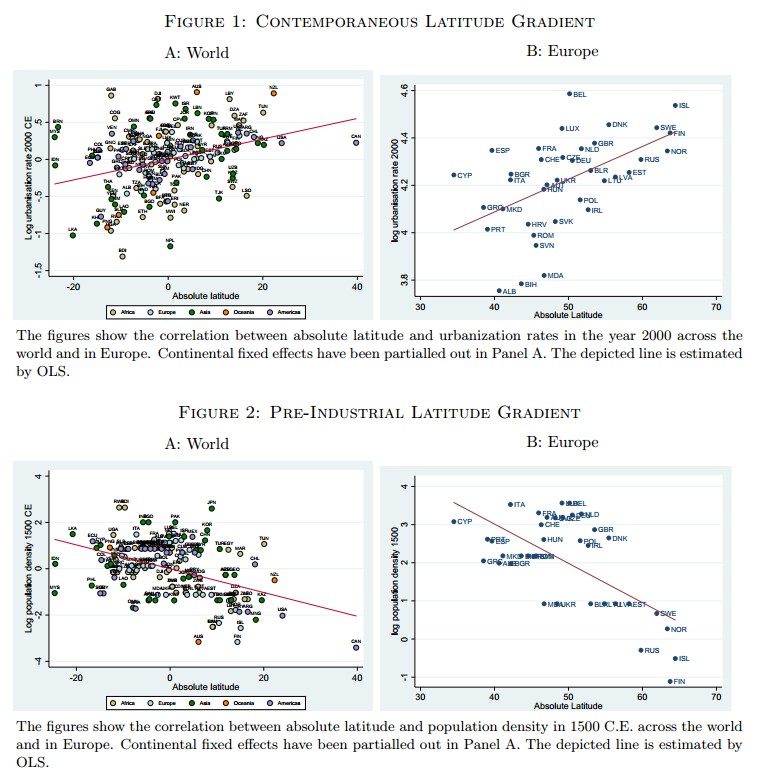The Reversal of the Latitude-Income Correlation
It’s well known that GDP per capita increases with distance from the equator and it does so moving both North and South. (I discuss this correlation at MRU in Geography and Development, Disease (video)). Dietz Vollrathat at the Growth and Development Blog points us to a new paper by Holger Strulik and Carl-Johan Dalgaard that shows that development used to be greater nearer the equator. Here’s the big picture.
The top panel shows that as absolute latitude (distance from the equator) increases today so does development, here measured as the urbanization rate. The left panel shows the world. The right panel shows, rather remarkably, that the relationship continues to hold in Europe. The bottom panel shows that as absolute latitude increased in 1500 development, here measured as population density, decreased both in the world and Europe.

What can account for this relationship and its reversal? The authors have a let’s say highly speculative (but very interesting!) theory. It runs as follows. Animals and people get bigger in colder climates possibly because surface area to volume decreases with size so larger animals can retain heat more easily. All else the same, however, bigger people means fewer people and so in the pre-industrial era higher latitudes had smaller populations leading to less innovation (ala my TED talk on market size and innovation). But fewer children also meant more investment in human capital per child (a Beckerian quality-quantity tradeoff). Higher human capital per child leads to increases in technology which allow and encourage even more human capital accumulation and fewer but yet even higher quality children and thus you hit a takeoff point where the economies of the colder regions accelerate generating the modern relationship.
Phew! Now that’s a theory. I don’t say that I believe it but I applaud the ambition. Bravo!
What alternative theories do MR readers propose?